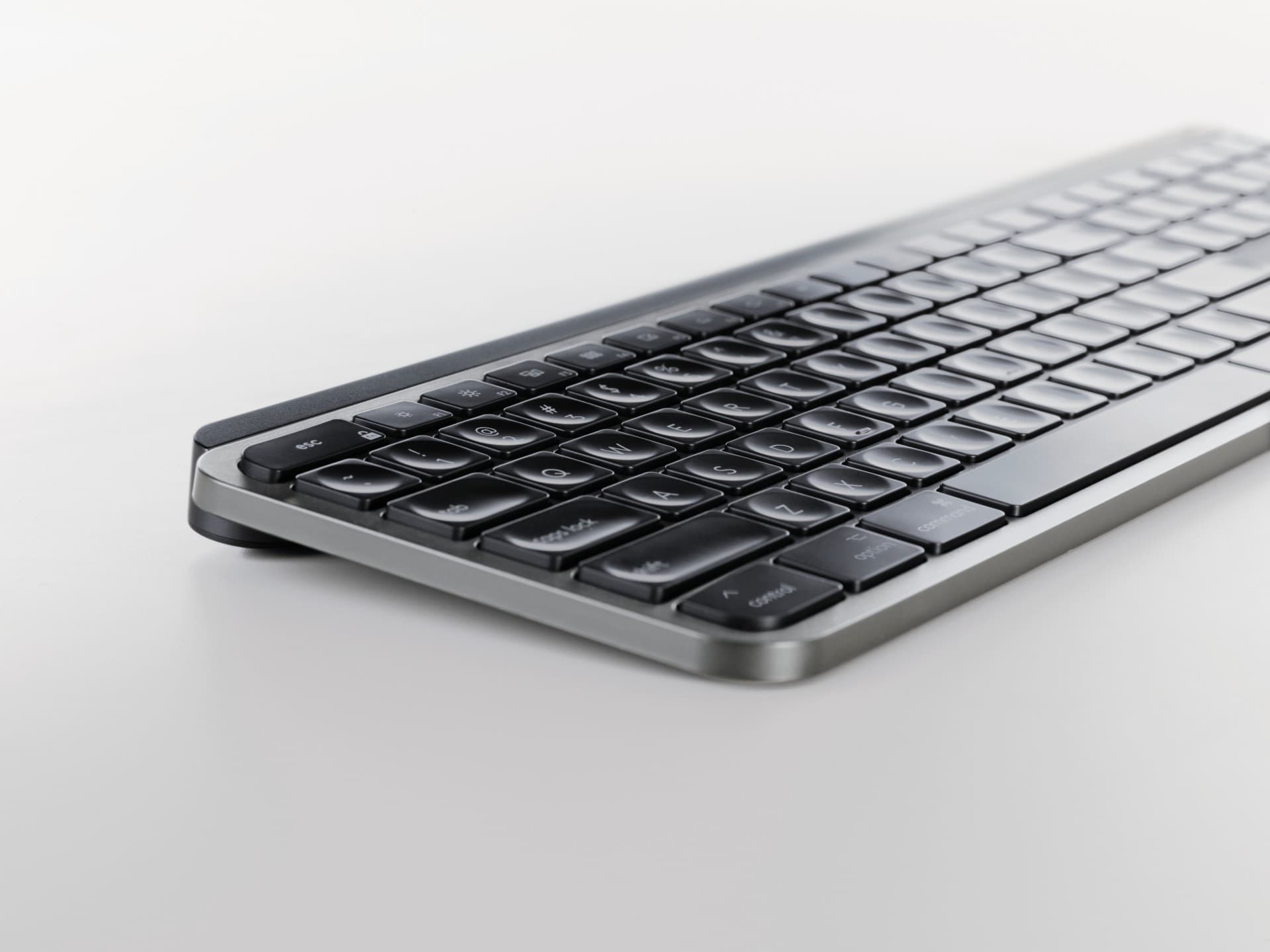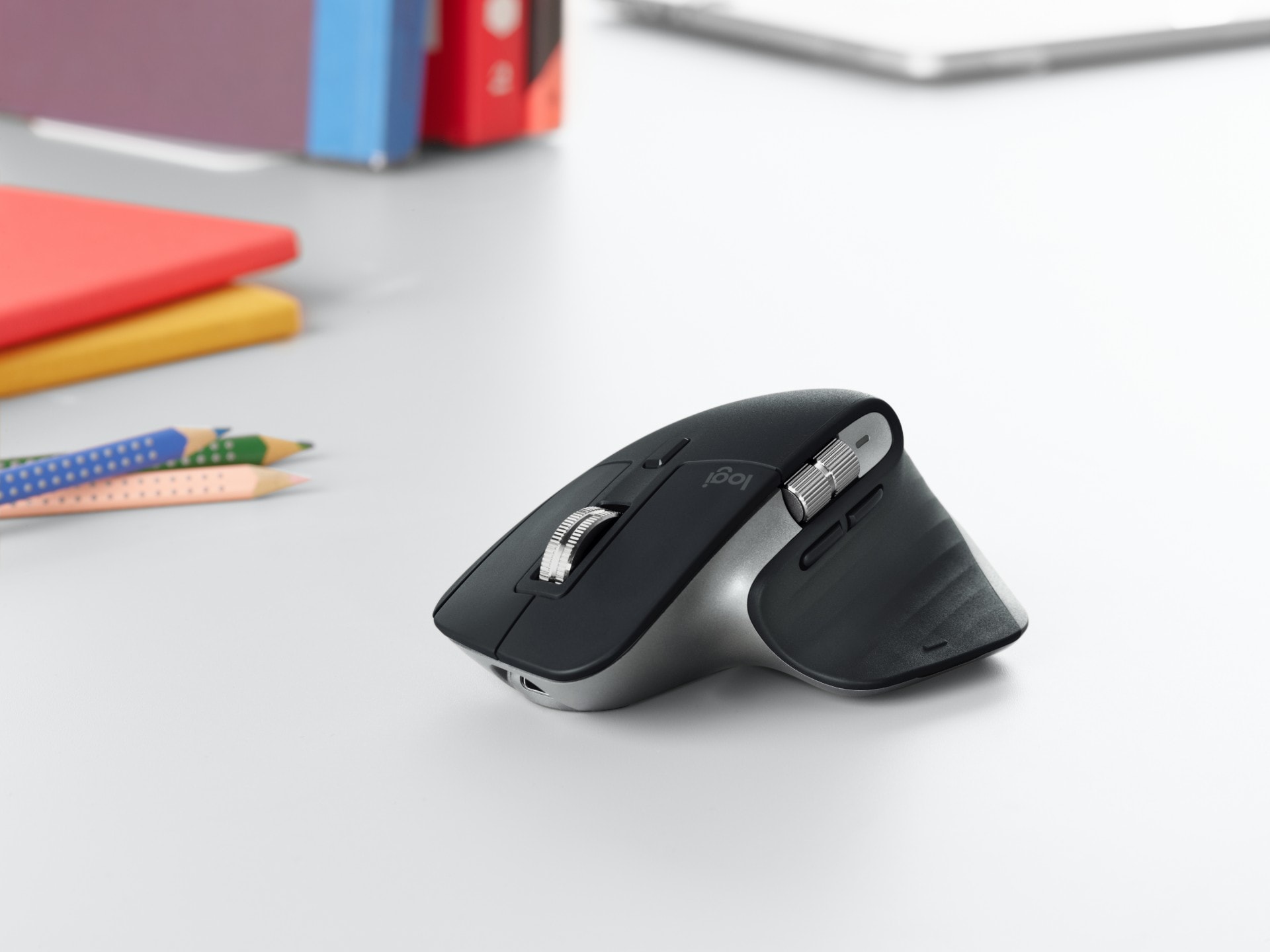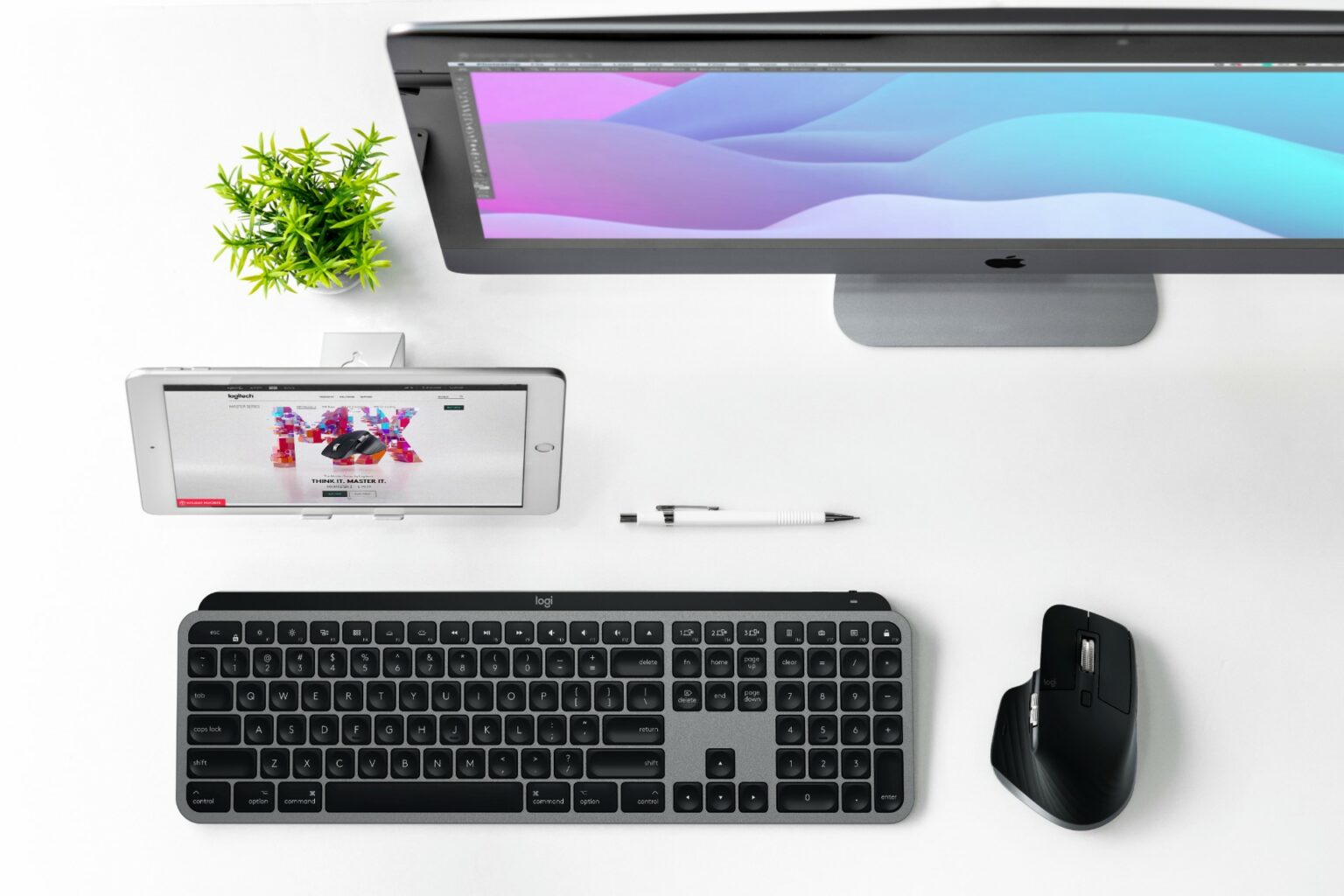Logitech launched Mac versions of its popular MX Keys and MX Master 3 on Tuesday, giving the pro keyboard and mouse a space gray makeover and adding some Apple-specific tweaks.
Most of the changes seem totally awesome for the “Mac purists” Logitech is targeting with these high-end accessories. One change might not be so welcome, though, depending on your experience with Bluetooth peripherals.
The company also released a new Mac-oriented version of its smaller K380 keyboard in white and pink color options.
Over the years, Logitech has built a solid rep by consistently producing outstanding mice and keyboards. The original MX Keys and MX Master 3, launched last September, raised the bar when it comes to speed and performance. The mouse’s super-slick MagSpeed scroll wheel and the keyboard’s smart backlighting are the marquee features. And with Logitech’s free Options software, users can customize the mouse’s multiple buttons for each app they use, offering maximum flexibility and utility.
While those high-end products totally work with Macs, they weren’t built for Macs. The updates launched today are.
MX Keys for Mac

Photo: Logitech
The changes are most obvious on the MX Keys for Mac. Logitech mimicked the layout of Apple’s Magic Keyboard with Numeric Keypad. That means the function key is where it belongs, and there’s an eject key like God intended for all those handy shortcuts.
The idea, Logitech says, was to let Mac power users avoid a learning curve and utilize their muscle memory for common key combos.
“We want them to feel at ease and start being productive as quickly as they can, with their favorite layout,” said Logitech product manager Olivia Hildebrand in a briefing about the new products.
Beautiful, smart backlighting
Just like the regular version, MX Keys for Mac boasts smart backlighting. Built-in sensors adjust the backlight to the ambient light in the room. Even cooler, proximity sensors turn on the backlight as your hands approach the keyboard.
Its comfortable keys, with shallow finger indents, sit in a very solid metal frame that doesn’t slide around the top of your desk. It charges via USB-C, and a small red LED indicates when the battery needs recharged.
Like many Logitech keyboards, the MX Keys for Mac lets you connect to three different devices and switch between them simply by tapping a key. That makes it ideal for working with an iPad, an iPhone or another Mac adjacent to your main Mac. (It’s also compatible with Logitech’s Flow software, which offers “cross-computer control and file sharing.” Since I only have one computer, I’ve never had the chance to use it.)
This new Mac keyboard also comes with one of Logitech’s handy unifying receivers. These tiny USB-A dongles allow up to six Logitech peripherals to connect to a single computer without Bluetooth, and they work quite reliably. Obviously, if you’re using a recent MacBook with nothing but USB-C hubs, you’ll need some sort of dongle or hub to use a unifying receiver. But they work much better, in my experience, than a Bluetooth connection.
Hands on with MX Keys for Mac
I tested the MX Keys for Mac for several days using a Bluetooth connection and using the unifying receiver. I definitely preferred using the latter. Yes, it requires a hub to add the tiny USB-A receiver. That’s not as elegant or handy as using Bluetooth. However, when using Bluetooth with the keyboard, occasional flakiness ensued — extra spaces appeared between words, I experienced slight lag at times, etc. A reboot fixed it, but it was still annoying.
Here’s one huge caveat about my initial testing of these devices. This isn’t the first time I’ve had Bluetooth problems with my 2016 MacBook Pro. Even Apple’s own peripherals act up from time to time when connected via Bluetooth. So this might be my MacBook’s problem rather than Logitech’s.
Ultimately, no matter how I connected the MX Keys for Mac, I liked the feel of the keyboard itself. And the adaptive backlighting looks brilliant. When using the unifying receiver, it proved flawless. Note: You need to be running macOS Catalina — Logitech says the keyboard doesn’t work with older software.
The bottom line is that if you like a classic-style Mac extended keyboard, and you’ve got a port for the USB-A receiver, the MX Keys for Mac is an undeniable winner. Your mileage may vary if you use it with Bluetooth, but that’s Bluetooth for you.
MX Keys for Mac comes in space gray. It retails for $99.99 and begins shipping later this month.
MX Master 3 for Mac

Photo: Logitech
The changes to the MX Master 3 for Mac are less obvious than for the keyboard — and one won’t necessarily sit well with Bluetooth haters. The new Mac model costs the same as the regular version, but doesn’t include a unifying receiver.
The turbocharged mouse’s chassis looks the same as the regular MX Master 3 (aside from the space gray accents, which aren’t that different). Like its predecessor, it also packs the superb electromagnetic MagSpeed scroll wheel that shifts on the fly from ratcheting precision to overwhelming speed.
Its ergonomic design makes it comfortable in my hand (although lefties need not apply). And its Darkfield 4,000 dpi sensor tracks extremely well on almost any surface. It, too, charges via an included USB-C to USB-C cable, and Logitech says it lasts up to 70 days.
All in all, it’s probably too much mouse for me. It offers so many advanced features, and so many programmable buttons, that it exceeds the needs of a word jockey like me. It’s nice knowing you can set the thumb wheel to do one thing in Excel and another in Photoshop, for instance, thanks to the Options software. For some people it’s going to be overkill. I guess if you need it, you know it. For the rest of us, it’s just a comfortable, super-capable mouse.
No unifying receiver
For me, the biggest difference between the original MX Master 3 and the new model is that the Mac version does not come with a unifying receiver. It’s a somewhat surprising omission that might give some potential users pause. (I secretly hoped Logitech would release a USB-C unifying receiver along with the Mac versions of the MX hardware.)
Hildebrand, the Logitech product manager, said the company worked extensively to fine-tune the Bluetooth setup for these products but would not share specifics. She said most users prefer Bluetooth because they don’t want to sacrifice a USB-C port on their Macs.
However, she admitted that some people run into Bluetooth problems. Typically those can be ameliorated by rebooting your Mac, deleting old Bluetooth devices you no longer use, or even changing your physical environment. (Bluetooth interference is definitely a thing.)
Hands on with MX Master 3 for Mac
In my admittedly brief hands-on time with the MX Master 3 for Mac, I experienced an erratic cursor when connected via Bluetooth. Sometimes it got squirrelly and made it nearly impossible to click where I wanted. I’m really not sure why. I’m certainly one of those people with too many Bluetooth devices paired to my Mac, so maybe that’s it. (I’ve also been experiencing problems with Logitech’s Options software, but that’s another story. Maybe my Mac is just cursed.)
The funny thing is, the MX Master 3 for Mac works with a unifying receiver — there’s just not one in the package. When I used it with the unifying receiver, I experienced none of the jumpiness that plagued my Bluetooth experiences.
Bluetooth problems aside, it’s an excellent mouse. But for me — a person with a history of Bluetooth snafus — it’s a little tough to swallow that the MX Master 3 for Mac costs the same as its predecessor but doesn’t come with that dainty little dongle.
Maybe I’ll dive into the Mac’s hidden Bluetooth debug menu, nuke all my settings, and see if that helps. More than likely, I’ll just keeping using the unifying receiver that came with the original MX Master 3. It’s less work, and I have a funny feeling it will prove more reliable anyway.
The MX Master 3 for Mac comes in space gray. It retails for $99.99 and begins shipping later this month.
K380 for Mac Multi-Device Bluetooth Keyboard

Photo: Logitech
As mentioned, Logitech also rolled out a new K380 for Mac keyboard today. Like its big brother the MX Keys for Mac, this petite keyboard also packs a layout tweaked to be more Mac-like. The function key is moved and it’s got an eject key, too.
Like the normal K380, it connects to up to three different devices through Bluetooth only. It’s an extremely reliable keyboard, great for use with a Mac or iPad. It lacks a number pad, so it’s perfect for people who don’t do a lot of 10-key entry and prefer a smaller setup. Many people find a smaller keyboard to be more ergonomic, since it allows a mouse or trackpad to sit closer to their body’s center mass. The small K380 also proves quite packable, so it’s great for taking on the road. For me, it makes for a much more comfortable setup than using my MacBook’s built-in keyboard.
The K380 for Mac comes in off-white and rose. The keyboard works with Macs running macOS 10.15 or later, iPhones running iOS 13 or later, and iPads running iPadOS 13.1 or later. It retails for $39.99 and begins shipping later this month.


